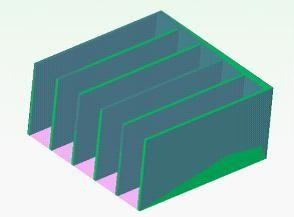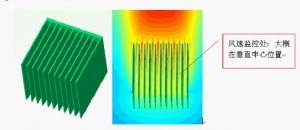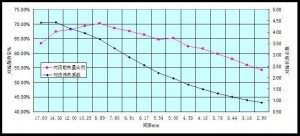Effect of fin clearance on performance in natural convection



In the heat dissipation design of LED lamps, only natural heat dissipation means can be used in many cases.Since the need for natural heat dissipation, the effective heat dissipation area of course the larger the better, the most direct way is to increase the fin, but the fin gap is not the smaller the better?It is not, because the clearance is small enough to a certain extent will affect the boundary layer of natural convection, once the boundary layer of adjacent fin plate wall confluence, the air velocity between the fins will drop sharply, and the convection effect will also drop sharply.
In the case of natural heat dissipation, the heat sink to see how much of the gap is good?According to the boundary layer theory, there must be a critical value, how can we give consideration to both heat dissipation area and convection efficiency?
Let's take a look at the effect of the temperature of a vertical fin changing as the fin clearance changes.
Considering radiation and heat dissipation, when the fin clearance is 9mm:
Lowest floor temperature;
The wind speed is maximum and tends to be stable.
The proportion of convective heat dissipation is the highest.
The convective heat transfer coefficient is at an inflection point and tends to be stable.
And general clearance 2-3 mm, convection heat transfer coefficient is only 1 w/m ^ 2 - K, convection heat accounted for 54%, so at the time of initial estimate the rise of temperature of the heat sink, according to the size of the gap to estimate.
If the height of the fin is changed to 0.05m, is it still consistent with this rule?
Generally, the height of heat sink decreases, and the variation trend of various curves with the clearance is basically the same as that of the heat sink with the original height, and the temperature is the lowest when the clearance is 7.8mm.
Based on the above data:
1. Estimate vertically when the rise of temperature of the heat sink, Δ T = (0.53 0.63) * P/A 】 【 (1-5) *.The convective heat dissipation was 53-63% of the total power consumption, and the convective heat transfer coefficient was 1-5.If the clearance is 2-4 mm, convection coefficient take 1 to 2 w/m ^ 2 - K.Clearance > 8 mm, coefficient of convection take 4 to 5 w/m ^ 2 - K.